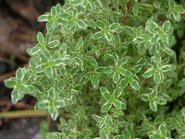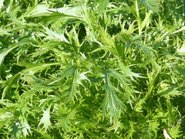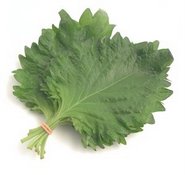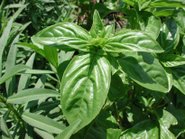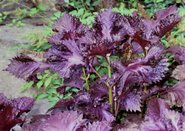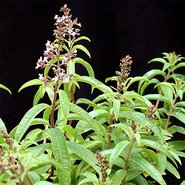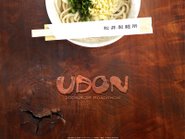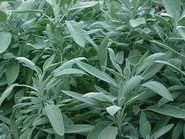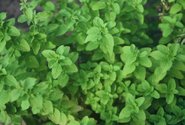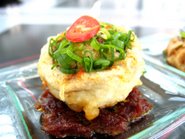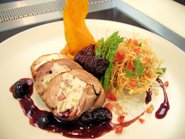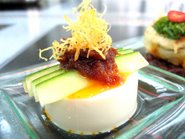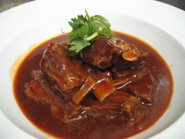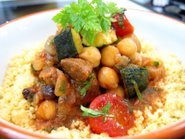Similar to Ngo Hiang like what we have in Singapore’s hawker fare, we sampled three places for this dish that is made of up different kinds of deep fried fritters eaten with a sweet chilli sauce or a starchy dip. The fritters could be anything from batter coated sweet potatoes, yam, shrimps, squid and fish fillets. Spring rolls and five spice flavoured meat rolled in beancurd skin are also part of the ensemble of this dish. Benchmarks for this dish include a great crispy batter for the fritters, fragrant chunky pieces of meat for the spiced beancurd rolls and a great chilli sauce to dip with. First location was the stall that operated in Uncle Lee’s food court. The taste was only so so. But the next two locations that were recommended by Uncle Lee had great outstanding merits. Both operated only in the mornings from 8am to 3pm. The first stall is at One Corner Café, located on Jalan Bangsar behind Lorong Swatow. This was also the stall that came down with Uncle Lee for the recent Penang food promotion @ York Hotel. But here in its original location, it was far much better in taste as the hawkers had to work with food budget restraints when they do their promotions Singapore. Hence when one is forced to compromise on quality ingredients, taste performance is also compromised. Here on its home ground, the fritters were freshly fried on order. Meat rolls were chunkier, fish fillets were plump and fresh and more varieties were also offered than what was put out at York Hotel.
The other great Lor Bak stall that we like was one standing at a corner coffee shop named Kheng Pin at the corner of Jalan Sri Bahari and Jalan Penang, opposite the Oriental Hotel. A veteran in the business, this Lor Bak stall features the usual standard items plus a variety of squid, shrimp and fish fritters, all home made and cooked on the spot. What made this stall outstanding was the batter for the fritters. It was light on taste and delivered a superb crispiness on all seafood crusted with it. The meat rolls were excellent too, very well marinated in spices and seasonings to the extent the meat comes out a little pinkish due to the brining effect of letting the meat sit long enough in the salty marinade.
Assam Laksa:


Currently I have two favourite stalls for this dish of thick rice noodles with a tamarind infused fish broth. The one that I have been patronising since coming to Penang for the first time is just opposite the Air Hitam Market along the road that leads to Penang’s most famous temple, Kek Lok Si. This stall is pretty much a one man operation and hence despite repeated invitations by Uncle Lee to join him in overseas food promotions, was never able to make it here.

To me, he serves the best assam laksa in Penang and one bowl is never enough. The quality of taste has been consistent always and the final touch of prawn paste has always been generous which gives the tangy broth a pungent fragrance. The broth is made with two kinds of oily fishes, Ikan Kembong and Sardines which brings out a better body to the dish. Tamarind or assam as it is known locally provides the desired tanginess that is balanced with sweetness from palm sugar. A variety of fresh spices like shallots, blue ginger, lemongrass and garlic add aromatic dimensions and the combination of all ingredients into the pot of broth creates aromas that you can sniff out even in distances away.

For the preferred version in downtown area, at the Joo Hooi coffee shop along the middle stretch of Penang Road, there is a stall that sells a version made with mackerel meat than the other two oily fishes mentioned above. The broth is sweeter in taste but the topping of prawn paste is rather diluted than thick so hence it is neither as rich nor fragrant as the one in Air Hitam. But still the rich stock makes up for the slack in the topping and if u are in downtown and need a quick for your craving for assam laksa, this would be the place for it.
Char Koay Teow
At the same Joo Hooi coffeeshop, there is also a pretty decent Char Koay Teow Stall too. The serving which costs about the same in Singapore has extra fish cake slices and large prawns on top of the regular cockles and Chinese sausages. Penang’s version of Char Koay Teow uses entirely only the flat rice noodles instead of a mix with yellow hokkien mee. As one of the most significant icon of Penang Hawker fare, nobody will dare to sell a lousy version due to stiff competition. But if due recognition were to be given, I would prefer to accredit the best ones like the way the Oscars does for movie stars. That is to have two recognitions for this category, one each for the Best Lady CKT fryer and Best Gentleman CKT fryer. This is how good it can be in Penang.
Undisputedly, the Best Lady CKT fryer award should go to the Auntie Char Koay Teow Stall @ Lorong Selamat where customers are willing to brave the hot sun or rain for sometimes up to an hour to get enough satisfaction of their cravings. Fried in a seasoned aluminium wok over a charcoal stove, its gets so deliciously smoky that Auntie needs a pair of goggles to keep focus on what’s going on in the wok.

The wait is always worth it as u get a plate of deliciously lard laden fried koay teow that taste as good as it smells. While it is sinfully rich with the lard, without it, CKT is totally spineless in taste as the other condiments are secondary. The lard delivers the fragrance and lifts the synergy of flavours from other ingredients during the cooking process. The control of fire is equally important as the right temperature creates the wok charred notes and maintains the right level of moisture between noodles and ingredients.

The Best Gentleman CKT Fryer should go to Ah Leng, formerly of Kimberly Street who now fries the noodles at a different location. Currently Ah Leng is at the Koon Hiang coffee shop at the corner between Jalan Honolulu and Jalan Dato Keramat. I have eaten char koay teow out of Ah Leng’s hands since 15 years ago Widely reputed to be the king of all char koay teow hawkers, Ah Leng doesn’t open shop unless all his ingredients are available and in place. He frequently takes breaks of a few days or even an entire week when he feels like it hence catching him on a day that he opens for business is equal to hitting a culinary jackpot. The title of king does not come as hot air as Ah Leng’s Char Kway Teow is crowned with a serving of large prawns and sweet tasting mantis prawns or “lai liu har” as the Cantonese call it. Even at RM8 a portion, it still puts our local versions to shame with its perceived value. My personal preference is that while both Ah Leng and Auntie’s Char Koay Teow are on par with each other in terms of taste, Ah Leng wins with a more affable personality.
Prawn Noodles:The father and son team next to Uncle Lee’s stall along Lorong Swatow used to be very good until the old man kicked the bucket and somehow the son couldn’t grasp the essence of it from dad. This time round, we found two other great places with individual merits.
At Presgrave Road, this family run business starts from 5pm onwards till the wee hours of the morning. I found the stock here very good with strong meaty dimensions and fried prawn shell flavours. The way the broth of the prawn noodles are prepared defines why Singapore’s hawkers’ version can never beat their counterparts in Penang, never mind the fact that the condiments in SG’s version are more luxurious. Raw ingredients and patience play an important role in the brewing of a good stock for the noodles.

The most difficult part in preparation is the blending of prawn shells with the meat stock and an initial round of simmering, followed by straining the essence back into the simmering broth. This is something that is not practised in SG which explains the inferiority in taste as compared to the Penang version. This crucial step, though time consuming allows the full flavour of the prawn shells to be extracted out to the maximum, providing the important flavours notes with a strength that defines it as a benchmark of excellence. In the other areas of preparation, dried chillies is combined with pre-soaked dried shrimp and blended into a paste, which is then cook up with the prawn shells and caramelised rock sugar as the foundation of the stock before pork bones and skin are added to provide “meatiness” to the broth. With this winning stock base, the garnishing ingredients that can range from boiled pig skin, hardboiled eggs, spare ribs and peeled prawns completes the final picture of assembly to a well executed dish. Another trade secret share was most hawkers would rather use prawns caught from the sea than farmed freshwater varieties as it is believed that the prawns from sea are tastier due to the salinity of the environment that they live in.


The other place that dishes up a mean spicy bowl of prawn noodles is at the one corner coffee shop at the Bangsar Road and a stone’s throw away from New World Food Court. This stall here serves the prawn noodles for breakfast only, launching the first bowls just before sunrise and clearing out everything before the call for midday prayers at the nearby mosque can be heard. The stock here is really spicy as compared to other places that I have tasted and at the end had to be washed down with two glasses of “Teh O Peng” or iced tea without milk as it is known locally. Compare with the Presgrave version, the prawn dimensions stood out more than the meaty notes for the broth. If u can ignore the spicy chilli notes and just focus on the other flavours, it is still very good. Given the popularity of the locals with this stall, be prepared to wait up to 45minutes for your order. Anyway if you don’t have the patience to wait, u can forget about having great hawker food in Penang.
Mee Jawa:

Also sometimes referred to as Apom Balik, especially by the Malays, Penang’s version of Ban Chiang Kueh comes with wafer thin crispy versions that are to die for. While the thick doughy kind is also available, it's the crispy version than sends u on an orgasmic high. Our favourite one is from the pushcart that used to be beside Uncle Lee’s stall along Lorong Swatow but has since shifted to the next adjacent street known as Jalan Hutton right after the New World Food Court Carpark. In between the folded wafer thin dough; there is a generous sprinkling of a mixture of coarse grounded toasted peanuts with sugar and sesame seeds. A generous brush of margarine gives it a touch of buttery fragrance and the dollop of creamed sweet corn does the wonderful job of balancing out the sweetness of the pancake. For the orgasmic version, ask for an egg to be added in and have a bite of it when the whites are just set and the yolk is still runny for that oozing sensation! A close competitive version can also be found at the Cecil Road Market.
Kway Teow Thng:
One of the main staples for breakfast in Penang, many hawkers do their stock for this rice noodle dish with at least two kinds of meat and bones. My vouch is for two stalls that I have tried on this trip, one in the coffee shop behind Chowrasta Market and the other at the Cecil Street Market. Both are equally happening at different times of the day. The stall at Kedai Kopi Soon Yuen which is behind Chowrasta market has a huge pot of broth made with chicken, duck and pork bones. The Kway Teow noodles are very smooth here and the broth has a meaty richness from the hours of simmering the different types of bones. Home made fish balls are part of the matching condiments together with slivers of boiled chicken meat. The key fragrance to this dish is a drizzle of freshly cooked garlic oil and a sprinkling of chopped spring onions.


The other superb kway teow thng stall is at the Cecil Street Market where the owner uses more than one hundred ducks a day for the several hundred bowls of kway teow thng that is sold daily. The broth is very tasty and the serving is very generous. The broth has been simmered for a very long time with both pork and duck bones plus ikan bilis till it turns a milky white. This indicates at least 6 hours of slow simmer to achieve such a flavourful broth which has a lingering after sweetness and very meaty dimensions.
Hokkien Char:

Very much like a cross between KL’s Dai Lok Mee and Singapore’s Fried Prawn Noodles. This version here at the Air Hitam Market is considered among to be one of the best for the obvious reasons. Each plate comes with a topping of crispy pork lard and its fragrance permeates the whole dish as u eat. Just like Char Koay Teow, this plate of Hokkien Char must be 100% lard driven recipe. The noodles are fried and braised briefly in a prawn and pork based stock. Dark soya sauc e is added and a variety of fish, squid and prawns are added in with some Chinese mustard greens. What really makes this dish outstanding here is the lip smacking kick ass sambal belachan. The chilli on its own is already very vibrant with flavours of lime, fermented shrimp and fresh coriander leaves blended in. Toss with the noodle and not only it tones down the “lardiness” of it, it stirs the entire plate of noodles alive with multiple flavour dimensions with a big “Oomph!”
Oyster Omelete:

Penang has two versions, one crispy fried and the other a moist one but both win with the large size oysters that come with it. We tried the moist version at Bee Hooi Coffee Shop in Pulau Tikus which came glistening with juicy plump oysters. It looked by did not taste greasy on the palate and each morsel of egg, starch and oyster was heavenly yummy!
The are many more interesting dishes like Nasi Kandar, Pasembor, Char Koay Kak (similar to SG’s carrot cake), Poh Piah, Warm Cuttlefish Kangkong Salad with Sweet Fermented Bean Sauce and Shrimp Paste, Wan Ton Mee etc. The list is endless and there will always be new discoveries each round.


After all the sampling and tasting of so many different recipes there are a few choices to wash down the all these lovely street grub. Besides the different permutations of local coffee and tea beverages, there are always Ice Kacang, Chendol and I always love this special drink concocted by Uncle Lee to cool down. It’s a mixture of lime juice, buah umbra or buah long long as we call it in SG, dried plums (Sng Buay) and slightly sweetened. The buah umbra gives it a slight astringency to the sweet and sour drink and its very cooling and refreshing on a hot weather day.
 Some of the classic dishes that we eat today have long been prepared with certain ingredients not only for taste and flavour reasons but food safety too. Some ingredients are able to help in holding prepared foods for a few days while others may allow longer periods of preservation in terms of months. Preservation with various types of ingredients can result in salty, spicy, sweet or sour taste sensations in the kind of foods we eat so it is up to the creative expertise of the chef to balance out taste on the palatte.
Some of the classic dishes that we eat today have long been prepared with certain ingredients not only for taste and flavour reasons but food safety too. Some ingredients are able to help in holding prepared foods for a few days while others may allow longer periods of preservation in terms of months. Preservation with various types of ingredients can result in salty, spicy, sweet or sour taste sensations in the kind of foods we eat so it is up to the creative expertise of the chef to balance out taste on the palatte. A
A cidic ingredients like citrus fruits and vinegars also help to slow down bacteria growth in certain raw dishes that is a favourite of some cuisines. For example, “Ceiviche” is a popular dish in Latin American cuisine that uses high acidic citrus fruits like limes and lemons to “cooked” seafood without any heat processing at all. The acids in the fruit juices create an unfriendly environment for bacteria to grow rapidly, thereby keeping their numbers low so that the good bacteria which are natural antibodies in our digestive system have enough time to neutralize the toxicity of such foreign bacteria. This is the same when chefs serve wasabi with raw seafood and horseradish with roast beef on medium doneness.
cidic ingredients like citrus fruits and vinegars also help to slow down bacteria growth in certain raw dishes that is a favourite of some cuisines. For example, “Ceiviche” is a popular dish in Latin American cuisine that uses high acidic citrus fruits like limes and lemons to “cooked” seafood without any heat processing at all. The acids in the fruit juices create an unfriendly environment for bacteria to grow rapidly, thereby keeping their numbers low so that the good bacteria which are natural antibodies in our digestive system have enough time to neutralize the toxicity of such foreign bacteria. This is the same when chefs serve wasabi with raw seafood and horseradish with roast beef on medium doneness.  Besides having great flavour compatibility with the foods served, wasabi and
Besides having great flavour compatibility with the foods served, wasabi and  horseradish roots also contain isothiocyanates that gives their characteristically similarity in flavours together with other types of mustards and have beneficial effects such as inhibiting microbe growth.
horseradish roots also contain isothiocyanates that gives their characteristically similarity in flavours together with other types of mustards and have beneficial effects such as inhibiting microbe growth. W
W ith a desirable level of moisture in most pastry products especially cakes, chefs tend to add fruit or grain flavoured liquers not just for flavour, but also to stablise the products as these high alcohol flavoured liquers have the ability to kill bacteria. Think of a rum and marsala wine laden Tiramisu or a kirsch obsessed Bavarian Black Forest cake. Sure enough it tasted good when the pastry slid down your throat with all that nice alcoholic effect of warm sensations, but that is also an indication of the presence of alcohol that is enougn to retard and slow down any exisiting bacteria growth in the pastries being prepared.
ith a desirable level of moisture in most pastry products especially cakes, chefs tend to add fruit or grain flavoured liquers not just for flavour, but also to stablise the products as these high alcohol flavoured liquers have the ability to kill bacteria. Think of a rum and marsala wine laden Tiramisu or a kirsch obsessed Bavarian Black Forest cake. Sure enough it tasted good when the pastry slid down your throat with all that nice alcoholic effect of warm sensations, but that is also an indication of the presence of alcohol that is enougn to retard and slow down any exisiting bacteria growth in the pastries being prepared. Some of the classic dishes that we eat today have long been prepared with certain ingredients not only for taste and flavour reasons but food safety too. Some ingredients are able to help in holding prepared foods for a few days while others may allow longer periods of preservation in terms of months. Preservation with various types of ingredients can result in salty, spicy, sweet or sour taste sensations in the kind of foods we eat so it is up to the creative expertise of the chef to balance out taste on the palatte.
Some of the classic dishes that we eat today have long been prepared with certain ingredients not only for taste and flavour reasons but food safety too. Some ingredients are able to help in holding prepared foods for a few days while others may allow longer periods of preservation in terms of months. Preservation with various types of ingredients can result in salty, spicy, sweet or sour taste sensations in the kind of foods we eat so it is up to the creative expertise of the chef to balance out taste on the palatte. A
A cidic ingredients like citrus fruits and vinegars also help to slow down bacteria growth in certain raw dishes that is a favourite of some cuisines. For example, “Ceiviche” is a popular dish in Latin American cuisine that uses high acidic citrus fruits like limes and lemons to “cooked” seafood without any heat processing at all. The acids in the fruit juices create an unfriendly environment for bacteria to grow rapidly, thereby keeping their numbers low so that the good bacteria which are natural antibodies in our digestive system have enough time to neutralize the toxicity of such foreign bacteria. This is the same when chefs serve wasabi with raw seafood and horseradish with roast beef on medium doneness.
cidic ingredients like citrus fruits and vinegars also help to slow down bacteria growth in certain raw dishes that is a favourite of some cuisines. For example, “Ceiviche” is a popular dish in Latin American cuisine that uses high acidic citrus fruits like limes and lemons to “cooked” seafood without any heat processing at all. The acids in the fruit juices create an unfriendly environment for bacteria to grow rapidly, thereby keeping their numbers low so that the good bacteria which are natural antibodies in our digestive system have enough time to neutralize the toxicity of such foreign bacteria. This is the same when chefs serve wasabi with raw seafood and horseradish with roast beef on medium doneness.  Besides having great flavour compatibility with the foods served, wasabi and
Besides having great flavour compatibility with the foods served, wasabi and  horseradish roots also contain isothiocyanates that gives their characteristically similarity in flavours together with other types of mustards and have beneficial effects such as inhibiting microbe growth.
horseradish roots also contain isothiocyanates that gives their characteristically similarity in flavours together with other types of mustards and have beneficial effects such as inhibiting microbe growth. W
W ith a desirable level of moisture in most pastry products especially cakes, chefs tend to add fruit or grain flavoured liquers not just for flavour, but also to stablise the products as these high alcohol flavoured liquers have the ability to kill bacteria. Think of a rum and marsala wine laden Tiramisu or a kirsch obsessed Bavarian Black Forest cake. Sure enough it tasted good when the pastry slid down your throat with all that nice alcoholic effect of warm sensations, but that is also an indication of the presence of alcohol that is enougn to retard and slow down any exisiting bacteria growth in the pastries being prepared.
ith a desirable level of moisture in most pastry products especially cakes, chefs tend to add fruit or grain flavoured liquers not just for flavour, but also to stablise the products as these high alcohol flavoured liquers have the ability to kill bacteria. Think of a rum and marsala wine laden Tiramisu or a kirsch obsessed Bavarian Black Forest cake. Sure enough it tasted good when the pastry slid down your throat with all that nice alcoholic effect of warm sensations, but that is also an indication of the presence of alcohol that is enougn to retard and slow down any exisiting bacteria growth in the pastries being prepared.
 One of the most heart wrenching things that is happening right now in Singapore are the exodus of good chefs that have chosen to leave this tiny red dot on the global map for greener pastures overseas. While we should be proud that our local chefs are making their mark overseas, what Singapore has lost is what the rest of the world especially China has gained. In the last ten years, we have lost prominent culinary talents like Justin Quek, the Aw Yong brothers, Jack and Martin, Eric Chiam, Jason Ong, Eric Ong, Jereme Leung, Kidd Leong, all which are home grown talents that have chosen to move beyond our shores. As the Chinese saying goes, “Bu shi Meng Long Bu Guo Jiang” or translated literally it means “only fierce and brave dragons will cross the mighty river”, the consolation is that we have people overseas whom we can be proud of as they showcase in their daily course of work, the mighty culinary prowess of this little island on the southernmost tip of continental Asia.
One of the most heart wrenching things that is happening right now in Singapore are the exodus of good chefs that have chosen to leave this tiny red dot on the global map for greener pastures overseas. While we should be proud that our local chefs are making their mark overseas, what Singapore has lost is what the rest of the world especially China has gained. In the last ten years, we have lost prominent culinary talents like Justin Quek, the Aw Yong brothers, Jack and Martin, Eric Chiam, Jason Ong, Eric Ong, Jereme Leung, Kidd Leong, all which are home grown talents that have chosen to move beyond our shores. As the Chinese saying goes, “Bu shi Meng Long Bu Guo Jiang” or translated literally it means “only fierce and brave dragons will cross the mighty river”, the consolation is that we have people overseas whom we can be proud of as they showcase in their daily course of work, the mighty culinary prowess of this little island on the southernmost tip of continental Asia. Very kindly, we were given a table that allowed us to enjoy a panoramic view of the Bund as we dine.
Very kindly, we were given a table that allowed us to enjoy a panoramic view of the Bund as we dine. 
 Here at the Whampoa Club, Chef Jereme has given this classic dish a modern twist which should just aptly rename the dish as Drunken Chicken with Shaoxing Wine Granita. Using the idea of
Here at the Whampoa Club, Chef Jereme has given this classic dish a modern twist which should just aptly rename the dish as Drunken Chicken with Shaoxing Wine Granita. Using the idea of 
 Autumn is the season for Hairy Crabs those from Yang Teng Lake are reputed to be the best. Unlike the regular mud crab or Sri Lanka crab that is often appreciated for its chunky pieces of meat, these hairy crabs are highly sought after for a different aspect. While each crab does not yield as much meat as other varieties, it is the taste of its natural sweetness, extra creamy rich roe and fine textured meat that many diners go after for. Our crab oriented starter (Stir Fried Crabmeat with Edomame and Shimeji Mushrooms salad and Vinegar Pearls) came in three components. First there was a fine salad of fresh green soya beans, honshimeiji mushrooms and frisee. The crabmeat was cooked in a superior stock and came as a shot in tequila glass accompanied with a few delicate pearls of black vinegar on the side. The idea is to pour the crabmeat over the salad and add on the vinegar pearls, toss the salad gently and allow the pearls to melt in the warmth of the crabmeat. This creates a simple vinaigrette which dresses the whole salad that is greatly enhanced by the sweetness of the fine textured crabmeat. Very innovative, very seductive!
Autumn is the season for Hairy Crabs those from Yang Teng Lake are reputed to be the best. Unlike the regular mud crab or Sri Lanka crab that is often appreciated for its chunky pieces of meat, these hairy crabs are highly sought after for a different aspect. While each crab does not yield as much meat as other varieties, it is the taste of its natural sweetness, extra creamy rich roe and fine textured meat that many diners go after for. Our crab oriented starter (Stir Fried Crabmeat with Edomame and Shimeji Mushrooms salad and Vinegar Pearls) came in three components. First there was a fine salad of fresh green soya beans, honshimeiji mushrooms and frisee. The crabmeat was cooked in a superior stock and came as a shot in tequila glass accompanied with a few delicate pearls of black vinegar on the side. The idea is to pour the crabmeat over the salad and add on the vinegar pearls, toss the salad gently and allow the pearls to melt in the warmth of the crabmeat. This creates a simple vinaigrette which dresses the whole salad that is greatly enhanced by the sweetness of the fine textured crabmeat. Very innovative, very seductive!

 N’s soup was a puree of pumpkin cooked in a flavourful stock. While most “Tang Yuan” or glutinous rice balls are often served as desserts with sweet fillings, Chef Jereme has chosen to have it done the savoury way filled with delicious crabmeat extracted from the hairly crabs in season. The result is a slightly sweet pumpkin soup that was well contrasted by the burst of savoury crab filling when u bite into it. Personal, I wished for a sprinkle of crispy fried prosciutto into the soup and the salty ham would have lift the body of the soup to that with a more umami character.
N’s soup was a puree of pumpkin cooked in a flavourful stock. While most “Tang Yuan” or glutinous rice balls are often served as desserts with sweet fillings, Chef Jereme has chosen to have it done the savoury way filled with delicious crabmeat extracted from the hairly crabs in season. The result is a slightly sweet pumpkin soup that was well contrasted by the burst of savoury crab filling when u bite into it. Personal, I wished for a sprinkle of crispy fried prosciutto into the soup and the salty ham would have lift the body of the soup to that with a more umami character. The plum juicy lightly battered king prawns were coated with a wasabi flavoured mayonnaise that delivered that right punch of pungency. Accompanying the prawns was a fruit kebab of dragon fruit, mango and Watermelon that cleanses the palate as you move on to the ribs.
The plum juicy lightly battered king prawns were coated with a wasabi flavoured mayonnaise that delivered that right punch of pungency. Accompanying the prawns was a fruit kebab of dragon fruit, mango and Watermelon that cleanses the palate as you move on to the ribs.  The meaty ribs were coated in a bitter sweet sauce of dark chocolate, hints of mocha and spices. Flakes of roasted almonds were sprinkle on as garnish but the nuts actually help to bridge the taste of the sauce and meat together.
The meaty ribs were coated in a bitter sweet sauce of dark chocolate, hints of mocha and spices. Flakes of roasted almonds were sprinkle on as garnish but the nuts actually help to bridge the taste of the sauce and meat together. A lighter way to cook the Shanghainese favourite fish , “Gui Yu” or Mandarin Fish as it is also commonly known locally is to gentle poach it and serve with a wine lees flavoured sauce. This lovely sauce put together with black fungus and bamboo shoots, has the sweet winey notes from the use of the wine lees as a key ingredient and its gentle lightness compliments the delicate thinly sliced poached fish fillets very well. A topping of finely shredded deep fried dried scallops balanced out the sweetness of the sauce with its umami and crispy character, uplifting the dish with a touch of finesse and sophistication.
A lighter way to cook the Shanghainese favourite fish , “Gui Yu” or Mandarin Fish as it is also commonly known locally is to gentle poach it and serve with a wine lees flavoured sauce. This lovely sauce put together with black fungus and bamboo shoots, has the sweet winey notes from the use of the wine lees as a key ingredient and its gentle lightness compliments the delicate thinly sliced poached fish fillets very well. A topping of finely shredded deep fried dried scallops balanced out the sweetness of the sauce with its umami and crispy character, uplifting the dish with a touch of finesse and sophistication. As in many traditional Chinese way of menu progression, we closed the savoury part of the menu with crispy noodles braised with fresh river shrimp and soya sauce jelly. The idea is to toss up the noodles with the soya sauce jelly allowing the fermented bean flavour of the soy sauce to be release into the noodles as the jelly melts. This prevents the loss of delicate aromas of the soya sauce which is often evaporated off by excessive heat during cooking if it were to be braised together with the noodles. The fine noodles were also a pleasurable experience on the palate as they soak up the delicious braising sauce.
As in many traditional Chinese way of menu progression, we closed the savoury part of the menu with crispy noodles braised with fresh river shrimp and soya sauce jelly. The idea is to toss up the noodles with the soya sauce jelly allowing the fermented bean flavour of the soy sauce to be release into the noodles as the jelly melts. This prevents the loss of delicate aromas of the soya sauce which is often evaporated off by excessive heat during cooking if it were to be braised together with the noodles. The fine noodles were also a pleasurable experience on the palate as they soak up the delicious braising sauce. N was mentioning as the service staff reset our table that they seemed to know what dessert we were going to choose and as soon as she just finished on that, a complimentary dessert tasting platter was place before us and even Chef Hew popped by to say hello. This is indeed a much needed break from traditional Chinese restaurant culture where most of the times, the chefs hide in the kitchens and are often too shy to come out to interact with customers. Well, this could also be a chef to chef kind of camaraderie since I had already made my profession known in the email booking, but is always an honour to have chefs dinning in your restaurant more so if they had come all the way from overseas. I would feel the same way too if someday when I do own a restaurant and having the support of fellow chefs from everywhere. We truly appreciate the
N was mentioning as the service staff reset our table that they seemed to know what dessert we were going to choose and as soon as she just finished on that, a complimentary dessert tasting platter was place before us and even Chef Hew popped by to say hello. This is indeed a much needed break from traditional Chinese restaurant culture where most of the times, the chefs hide in the kitchens and are often too shy to come out to interact with customers. Well, this could also be a chef to chef kind of camaraderie since I had already made my profession known in the email booking, but is always an honour to have chefs dinning in your restaurant more so if they had come all the way from overseas. I would feel the same way too if someday when I do own a restaurant and having the support of fellow chefs from everywhere. We truly appreciate the


 Chinese cuisine to the rest of the world is often well represented by schools of Cantonese, Sichuan, Beijing, Shanghainese and Hunan flavours. Beyond these five major schools of flavours, there are many other less discovered ethnic cuisines of China and among them, the ethnic cuisine of Manchuria. While it may not be a significant part of Chinese cuisine, it does have its own characteristics merits and specialities.
Chinese cuisine to the rest of the world is often well represented by schools of Cantonese, Sichuan, Beijing, Shanghainese and Hunan flavours. Beyond these five major schools of flavours, there are many other less discovered ethnic cuisines of China and among them, the ethnic cuisine of Manchuria. While it may not be a significant part of Chinese cuisine, it does have its own characteristics merits and specialities. We started with other items from the menu among which is a cold platter of Fen Pi with shredded raw vegetables with sesame sauce and oil oriented garlic soy dressing. Fen Pi is actually flat noodles made from mung bean flour and taste slippery smooth with slight suppleness. To appreciate this dish, the sesame pasted is first poured over the noodles and followed by the soy garlic dressing. Toss evenly with the finely shredded toppings of cucumbers, carrots, red cabbage, fresh coriander leaves and finely sliced soy marinated pork. We tasted the dish and the initial toss and found it to be very nice but upon N’s suggestion to drizzle some black vinegar, it really lifted the whole dish and brought it alive, perking up the flavours to a new level of deliciousness. Sometimes wife knows best.
We started with other items from the menu among which is a cold platter of Fen Pi with shredded raw vegetables with sesame sauce and oil oriented garlic soy dressing. Fen Pi is actually flat noodles made from mung bean flour and taste slippery smooth with slight suppleness. To appreciate this dish, the sesame pasted is first poured over the noodles and followed by the soy garlic dressing. Toss evenly with the finely shredded toppings of cucumbers, carrots, red cabbage, fresh coriander leaves and finely sliced soy marinated pork. We tasted the dish and the initial toss and found it to be very nice but upon N’s suggestion to drizzle some black vinegar, it really lifted the whole dish and brought it alive, perking up the flavours to a new level of deliciousness. Sometimes wife knows best. Dumplings are a part of Manchurian cuisine and also a speciality of this restaurant which offers more than 15 combinations of fillings. We chose the chef’s recommendations of having it done imperial style that has them lightly pan fried and covered with a paper thin wafer of rice starch. The dumplings were bursting with juicy bits of shrimp and Beijing cabbage. By dipping them into the fragrant black vinegar, it enhanced the pleasure of each morsel and cuts the greasy mouth feel. The sweetness of the Beijing cabbage was a great companion to the shrimp meat and gave the dumpling fillings a nice crunchy texture.
Dumplings are a part of Manchurian cuisine and also a speciality of this restaurant which offers more than 15 combinations of fillings. We chose the chef’s recommendations of having it done imperial style that has them lightly pan fried and covered with a paper thin wafer of rice starch. The dumplings were bursting with juicy bits of shrimp and Beijing cabbage. By dipping them into the fragrant black vinegar, it enhanced the pleasure of each morsel and cuts the greasy mouth feel. The sweetness of the Beijing cabbage was a great companion to the shrimp meat and gave the dumpling fillings a nice crunchy texture. Soon the roast lamb arrived with the meat all sliced up and re-cooked till almost dried up. It was a letdown for us as we anticipated juicy roasted leg but ended with torn shredded pieces of overcooked meat.
Soon the roast lamb arrived with the meat all sliced up and re-cooked till almost dried up. It was a letdown for us as we anticipated juicy roasted leg but ended with torn shredded pieces of overcooked meat. 
 Meat and mushrooms are a classic combination so we ordered a dish of sautéed sliced mushrooms as our final dish. The abalone textured like slices of Bai Ling Mushrooms were sautéed with a sauce that was made up with soy, ketchup and Maggi Seasoning sauces, accompanied with shoestring style strips of deep fried sweet potatoes. The lovage and soy notes of the sauce brought out the savouriness of the supple textured mushroom slices which was balance by the natural and crispiness of the deep fried sweet potatoes. We enjoyed this dish very much and appreciated the delicate balance of fungus, root vegetable and naturally fermented sauces.
Meat and mushrooms are a classic combination so we ordered a dish of sautéed sliced mushrooms as our final dish. The abalone textured like slices of Bai Ling Mushrooms were sautéed with a sauce that was made up with soy, ketchup and Maggi Seasoning sauces, accompanied with shoestring style strips of deep fried sweet potatoes. The lovage and soy notes of the sauce brought out the savouriness of the supple textured mushroom slices which was balance by the natural and crispiness of the deep fried sweet potatoes. We enjoyed this dish very much and appreciated the delicate balance of fungus, root vegetable and naturally fermented sauces. Would you pay for an air ticket just to eat hawker food in Penang? The answer for me is yes. Without doubt, I am willing to do so for hawker food that has fed more than three generations of families, that does not have ambitions to become a franchise multinational corporation, that believes in no shortcuts or the easy way out when it comes to preparation and ingredients, that is true to its own cooking and has maintained the standards of expectations from its loyal customers one generation after another. Here in Penang, hawker food is real culinary art seen in the form as the most basics of basics in the different dinning levels of food appreciation. The fact is the standard of the foods produced by the hawkers on this island off the coast of the mainland of peninsula Malaysia is so unmatched elsewhere that it becomes the culinary capital of the hawkers’ culture in South East Asia. There is passion, pride and dignity to prepare great tasty fare for the locals who formed the majority of their customers and are their strictest silent critics on standards of expectation. No hawker on Penang Island can survive for generations if they serve trashy food by relying on prepared sauces and spice pastes or taking the shortcuts with processed foods. The hawkers are not ambitious to offer wide varieties of foods, preferring instead to just focus a few items and perfecting the art of preparing them. Competition for customers is fierce and intense based on quality, hence the difference in standards from stall to stall is not such a wide gap like in Singapore. The winning stall scores by having an extra dollop of delicious sauce or generous toppings and garnishes that can result in an extra dimension of flavour.
Would you pay for an air ticket just to eat hawker food in Penang? The answer for me is yes. Without doubt, I am willing to do so for hawker food that has fed more than three generations of families, that does not have ambitions to become a franchise multinational corporation, that believes in no shortcuts or the easy way out when it comes to preparation and ingredients, that is true to its own cooking and has maintained the standards of expectations from its loyal customers one generation after another. Here in Penang, hawker food is real culinary art seen in the form as the most basics of basics in the different dinning levels of food appreciation. The fact is the standard of the foods produced by the hawkers on this island off the coast of the mainland of peninsula Malaysia is so unmatched elsewhere that it becomes the culinary capital of the hawkers’ culture in South East Asia. There is passion, pride and dignity to prepare great tasty fare for the locals who formed the majority of their customers and are their strictest silent critics on standards of expectation. No hawker on Penang Island can survive for generations if they serve trashy food by relying on prepared sauces and spice pastes or taking the shortcuts with processed foods. The hawkers are not ambitious to offer wide varieties of foods, preferring instead to just focus a few items and perfecting the art of preparing them. Competition for customers is fierce and intense based on quality, hence the difference in standards from stall to stall is not such a wide gap like in Singapore. The winning stall scores by having an extra dollop of delicious sauce or generous toppings and garnishes that can result in an extra dimension of flavour.











 The wait is always worth it as u get a plate of deliciously lard laden fried koay teow that taste as good as it smells. While it is sinfully rich with the lard, without it, CKT is totally spineless in taste as the other condiments are secondary. The lard delivers the fragrance and lifts the synergy of flavours from other ingredients during the cooking process. The control of fire is equally important as the right temperature creates the wok charred notes and maintains the right level of moisture between noodles and ingredients.
The wait is always worth it as u get a plate of deliciously lard laden fried koay teow that taste as good as it smells. While it is sinfully rich with the lard, without it, CKT is totally spineless in taste as the other condiments are secondary. The lard delivers the fragrance and lifts the synergy of flavours from other ingredients during the cooking process. The control of fire is equally important as the right temperature creates the wok charred notes and maintains the right level of moisture between noodles and ingredients.



 The most difficult part in preparation is the blending of prawn shells with the meat stock and an initial round of simmering, followed by straining the essence back into the simmering broth. This is something that is not practised in SG which explains the inferiority in taste as compared to the Penang version. This crucial step, though time consuming allows the full flavour of the prawn shells to be extracted out to the maximum, providing the important flavours notes with a strength that defines it as a benchmark of excellence. In the other areas of preparation, dried chillies is combined with pre-soaked dried shrimp and blended into a paste, which is then cook up with the prawn shells and caramelised rock sugar as the foundation of the stock before pork bones and skin are added to provide “meatiness” to the broth. With this winning stock base, the garnishing ingredients that can range from boiled pig skin, hardboiled eggs, spare ribs and peeled prawns completes the final picture of assembly to a well executed dish. Another trade secret share was most hawkers would rather use prawns caught from the sea than farmed freshwater varieties as it is believed that the prawns from sea are tastier due to the salinity of the environment that they live in.
The most difficult part in preparation is the blending of prawn shells with the meat stock and an initial round of simmering, followed by straining the essence back into the simmering broth. This is something that is not practised in SG which explains the inferiority in taste as compared to the Penang version. This crucial step, though time consuming allows the full flavour of the prawn shells to be extracted out to the maximum, providing the important flavours notes with a strength that defines it as a benchmark of excellence. In the other areas of preparation, dried chillies is combined with pre-soaked dried shrimp and blended into a paste, which is then cook up with the prawn shells and caramelised rock sugar as the foundation of the stock before pork bones and skin are added to provide “meatiness” to the broth. With this winning stock base, the garnishing ingredients that can range from boiled pig skin, hardboiled eggs, spare ribs and peeled prawns completes the final picture of assembly to a well executed dish. Another trade secret share was most hawkers would rather use prawns caught from the sea than farmed freshwater varieties as it is believed that the prawns from sea are tastier due to the salinity of the environment that they live in.












 Very much like a cross between KL’s Dai Lok Mee and Singapore’s Fried Prawn Noodles. This version here at the Air Hitam Market is considered among to be one of the best for the obvious reasons. Each plate comes with a topping of crispy pork lard and its fragrance permeates the whole dish as u eat. Just like Char Koay Teow, this plate of Hokkien Char must be 100% lard driven recipe. The noodles are fried and braised briefly in a prawn and pork based stock. Dark soya sauc e is added and a variety of fish, squid and prawns are added in with some Chinese mustard greens. What really makes this dish outstanding here is the lip smacking kick ass sambal belachan. The chilli on its own is already very vibrant with flavours of lime, fermented shrimp and fresh coriander leaves blended in. Toss with the noodle and not only it tones down the “lardiness” of it, it stirs the entire plate of noodles alive with multiple flavour dimensions with a big “Oomph!”
Very much like a cross between KL’s Dai Lok Mee and Singapore’s Fried Prawn Noodles. This version here at the Air Hitam Market is considered among to be one of the best for the obvious reasons. Each plate comes with a topping of crispy pork lard and its fragrance permeates the whole dish as u eat. Just like Char Koay Teow, this plate of Hokkien Char must be 100% lard driven recipe. The noodles are fried and braised briefly in a prawn and pork based stock. Dark soya sauc e is added and a variety of fish, squid and prawns are added in with some Chinese mustard greens. What really makes this dish outstanding here is the lip smacking kick ass sambal belachan. The chilli on its own is already very vibrant with flavours of lime, fermented shrimp and fresh coriander leaves blended in. Toss with the noodle and not only it tones down the “lardiness” of it, it stirs the entire plate of noodles alive with multiple flavour dimensions with a big “Oomph!” Penang has two versions, one crispy fried and the other a moist one but both win with the large size oysters that come with it. We tried the moist version at Bee Hooi Coffee Shop in Pulau Tikus which came glistening with juicy plump oysters. It looked by did not taste greasy on the palate and each morsel of egg, starch and oyster was heavenly yummy!
Penang has two versions, one crispy fried and the other a moist one but both win with the large size oysters that come with it. We tried the moist version at Bee Hooi Coffee Shop in Pulau Tikus which came glistening with juicy plump oysters. It looked by did not taste greasy on the palate and each morsel of egg, starch and oyster was heavenly yummy!



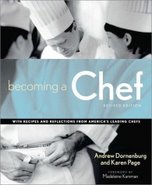
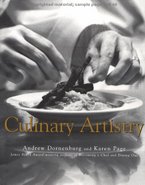


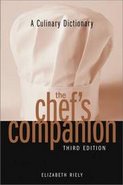

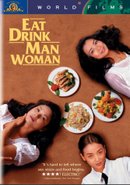
.jpg)



